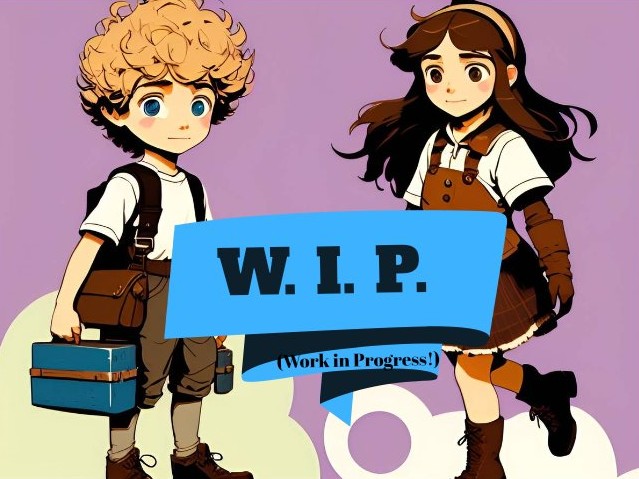Tawantinsuyu
The Tawantinsuyu possess a considerable empire directly south of the Isthmus of the Huntsman. Based primarily within the mountain range which overlooks much of the Continent Beyond, as the Kingdom of Accia calls it, much of their empire consists of rainforest and craggy, high altitude mountains. They are master masons and worship a pantheon of elemental deities. They are also ruthless diplomats and manage their empire with an iron grip.
Independent of the Tawantinsuyu Empire, the Tawantinsuyu have actually assimilated a number of ethnicities into their own culture. Tawantinsuyu has since been used as an almost blanket ethnicity for an array of subcultures. In fact some of these peoples will simply refer to themselves as runa or Runakuna meaning person or the people. This is especially the case when referring to someone of their original ethnicity/country, before they began expanding into an empire.
A very influential Tawantinsuyu has also become a champion against the Kingdom of Accia's southern expansion, the last wall between the kingdom and the Continent Beyond. Supay the Huntsman and his Chakuqpa Runan have taken up residence in Pakaysacha in order to push the kingdom back. Relying on the Tawantinsuyu Empire for supplies and men, this settlement has quickly become a cultural mixing pot between the Tawantinsuyu and local Bakongo people.
Despite their connection to the empire, many Tawantinsuyu who find themselves on this frontier are seeking a life away from this imposing political force and Supay is happy to offer them sanctuary. While he tolerates their aid for the sake of Pakaysacha and the isthmus, he finds them only somewhat more palatable than the Kingdom of Accia. Another batch of greedy men running another ambitious empire, putting the the burden of war on the average man. It is unsurprising this empire wishes to keep a wary eye on Supay.
Culture
Major language groups and dialects
They primarily speak Runasimi but there are innumerable languages still used and circulated within the borders of their empire, the native tongue of those they have conquered.
Common Dress code
Their clothes are extremely colorful and make use of a vast array of geometric patterns. There is a system to these patterns involving class and nobility but this isn't very prevalent in Pakaysacha, far from their empire. Supay readily welcomes any looking for a home outside the empire's presence so fashion isn't quite as strict as one might find inside the empire. Traditions revolving around who can and can't wear feathers, jewelry, certain patterns or face paint, aren't enforced and the people of Pakaysacha have become quite expressive, especially alongside their Bakongo neighbors. Even within the empire, outside of their heartland there are countless subgroups of their citizenry with their own styles and traditions, varying especially by where they live.
Generally, clothing from the high mountains or the heart of the empire itself has become popular in Pakaysacha. Clothing is woven or knitted into textiles and these are worn whole, not often cut or tailored. These are held together by large metal pins.The men wear simple tunics (unqo), which are made from a single sheet doubled and sewn together at the sides with openings left for the arms and neck, and grass shoes, woolen shoes, or leather sandals.
Ponchos are also very popular but not often worn over a tunic in the heat. Chakuqpa runan have actually taken to wearing ponchos in place of tunics, thanks to the freedom of movement when they transform, and just the lower half of a tunic secured in place by a chumpi belt. Loincloths are generally worn underneath whichever kind of tunic and every man used a small bag in which he carries his possessions and coca leaves.
The women dress in two varying styles, one from their heartland and another from the high mountains, adapted to the rainforest. When dressing in the first style, they wear ankle-length tunics and usually with a braided waistband. At the top, the upper edges fasten together over the shoulders by long pins and pass under the arms at the sides. On top of the tunic, they wear a mantle over the shoulders and fasten at the front with a large square metal pin known as tupo made of gold or silver. They don't cut their hair but part it in the middle and wear it down their back. Their footwear are sandals made of leather, wool, or fiber plants.
When dressing in the high mountain style, though some mix these together, they will instead wear monteras, polleras and local bantu shirts or shortened tunics as shirts (their traditional woolen layers too hot for the rainforest). Monteras are a traditional and decorative hat with a sanq'apa, a woven strap decorated with white beads, that ties under the chin. Polleras are wide skirts, traditionally made from handwoven wool bayeta cloth. Skirts are usually trimmed with a colorful band called a puyto.
Art & Architecture
They are master masons, constructing mountaintop, tiered cities which have stood the test of time. Many of their cities are thousands of years old. They also enjoy trapezoidal buildings painted in bright colors. Much of their architectural style has been integrated into Pakaysacha, adapted to its treetop setting. As it is built into the canopy, they had to forgo their favored stone for lighter materials but one can still see the influence of Tawantinsuyu architecture such as the presence of kancha.
Major organizations
Related Organizations
Related Locations
This article isn't quite finished yet! Annie, Albert and I are hard at work adding and editing this article, you can expect more here in the future!







Comments